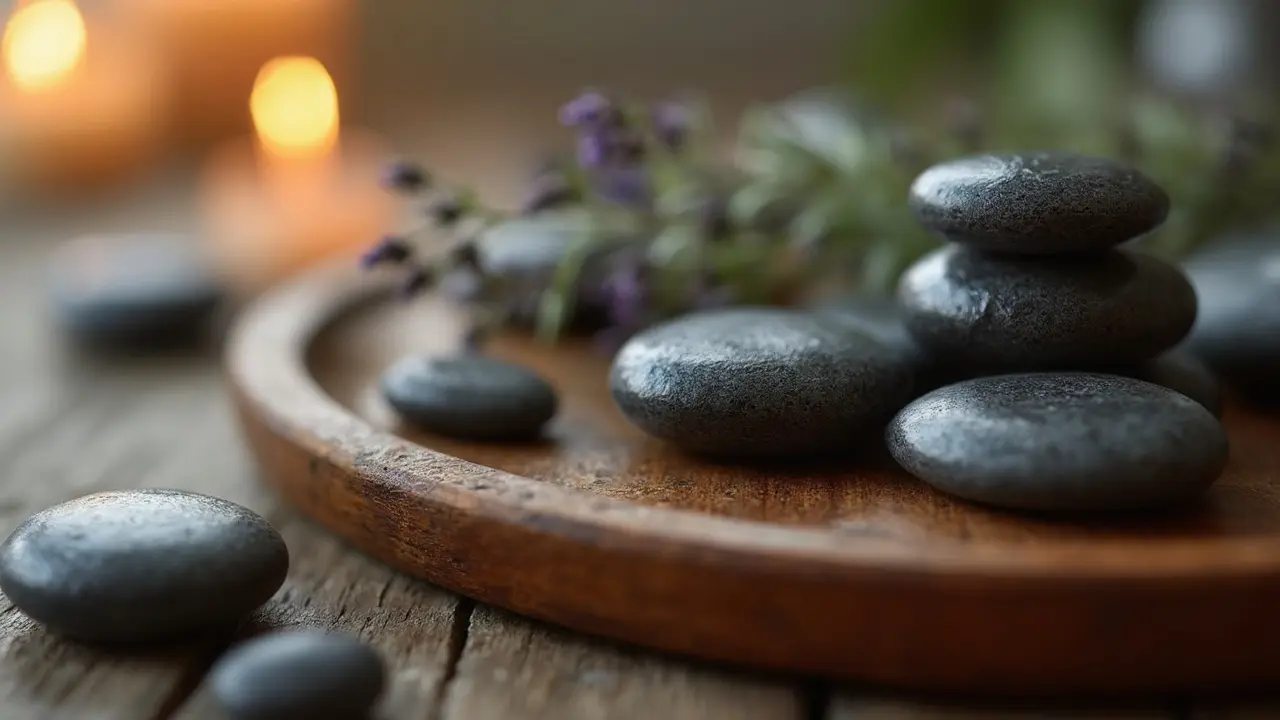Ever wondered what it really feels like to have smooth, heated stones glide down your back? Hot stone massage isn’t only about feeling good — it packs some surprising health perks too. You get heat plus gentle pressure, and suddenly, stubborn knots in your muscles seem to give up the fight.
This technique goes way beyond just being cozy. Therapists use special basalt stones because they hold warmth much longer than regular rocks. That heat seeps deep, relaxing tight spots that regular hands can’t always reach. If everyday life has you stiff and sore, it’s not just in your head: studies have shown this treatment can lower stress hormones and even help with sleep.
No, you don’t need to be a spa lover or even a massage pro to jump in. If you can handle a heating pad, chances are you’ll find comfort here. Still, there’s a bit more to it than just lying down and letting someone pile hot rocks on you (spoiler: it’s actually pretty soothing). Stick around if you’ve ever been curious about how to melt away that nagging tension — sometimes, a little heat goes a long way.
- How Does Hot Stone Massage Work?
- Top Benefits of Hot Stone Massage
- What Happens During a Session?
- Is Hot Stone Massage Right for You?
- Tips for Getting the Best Experience
- Busting Myths: What Hot Stone Massage Isn’t
How Does Hot Stone Massage Work?
Hot stone massage is simple, but there’s a lot going on under the surface. The main idea is that specially heated stones, usually made from volcanic basalt, are placed on key points of your body and sometimes used by the therapist to massage your muscles. Basalt rocks are the go-to choice because they keep heat for longer than most stones, so you get a steady, soothing warmth during your session.
The process actually starts before you walk in the door. Therapists heat the stones in water until they reach about 120 to 140 degrees Fahrenheit—which is warm enough to loosen tight muscles but not so hot that it causes discomfort. They’ll test each stone on themselves before using it on you, just to make sure it’s safe and comfortable.
Once you’re settled on the table, the therapist places the stones on spots like your back, legs, or even between your toes. While the stones sit, you relax—and your muscles start to loosen up thanks to the heat. After a few minutes, the therapist uses the stones kind of like tools, kneading muscles and working out those stubborn knots. In fact, combining heat with the pressure of massage makes it easier for the therapist to get deeper into muscle tissue without causing pain.
- Basalt stones are key—they retain heat longer.
- Stones are heated to a careful, safe range (120-140°F).
- Placement matters: spots like the spine, shoulders, and palms are common.
- Massage strokes are usually slow and steady for a relaxing effect.
What makes hot stone massage different from a basic rubdown is the deep, penetrating warmth from the stones. This boosts blood flow to sore areas and may even help the body flush out waste faster. If you’ve ever left a regular massage feeling like you needed just a bit more relief, adding heat can make all the difference.
Top Benefits of Hot Stone Massage
If sore muscles and daily stress are regular guests in your life, a hot stone massage could really shake things up. Here’s why people keep picking this therapy over others—think of it as your shortcut to both physical and mental relief. Out of all the perks, the biggest is deep relaxation. The steady heat lets your tense muscles drop their stubborn guard, making it easier for the therapist to work out knots you didn’t even know you had.
- Relieves Muscle Pain: The warmth from the stones helps blood flow better, so stiff muscles get more oxygen and feel less sore. Physical therapists sometimes recommend this for chronic back pain or post-workout recovery.
- Reduces Stress and Anxiety: After just one session, many people notice their worries take a back seat. Studies show hot stone massage can lower your levels of cortisol (the stress hormone), improving your overall mood.
- Improves Sleep: If you have trouble sleeping, you’re not alone—around 1 in 3 adults struggles with insomnia. Heat therapy has been proven to help your body switch from “fight or flight” to “rest and digest,” making it easier to fall asleep faster.
- Boosts Circulation: Good blood flow isn’t just for athletes; it helps your body repair itself and can even help cold hands and feet feel warmer.
- Supports Joint Flexibility: If bending over or twisting feels iffy, regular hot stone massages may make your joints move smoother, thanks to the combo of deep warmth and gentle manipulation.
Here’s a quick look at what people report after adding hot stone massage to their routine:
| Benefit | % of People Who Experienced Improvement |
|---|---|
| Reduced Muscle Tension | 75% |
| Lower Stress | 80% |
| Better Sleep | 60% |
| Improved Flexibility | 55% |
| General Well-being | 85% |
Bottom line, a hot stone massage isn’t just for treating yourself—it’s a real option for working out knots, calming your mind, and just making life a little easier to handle.
What Happens During a Session?
Walk in, fill out a quick health form, and you’re usually asked about areas that feel extra sore or tense. Communication’s a big deal here—don’t hold back if you want more (or less) heat or pressure. The goal is to make it totally comfortable for you.
The therapist starts by warming up your muscles with classic Swedish massage techniques. Think smooth strokes and light to medium pressure. Once things are a bit loosened up, the star of the show comes in: hot, smooth basalt stones. These are heated in special water baths to stay at just the right temp—usually between 120°F and 130°F (49°C – 54°C). Too hot? Always speak up.
The stones get placed on key points like your back, hands, or even between your toes. Some get used as massage tools, gliding along your muscles to really dig in without that deep, sometimes painful pressure. Don’t expect all stones to stay in one place the whole time; they’ll get switched out for fresh hot ones if they cool down.
- Most sessions last 60 to 90 minutes.
- About 8 to 12 stones are often used at a time.
- Therapists check the stone temperature constantly for your safety.
- They may use a combo of hands and stones depending on what your body needs.
Here’s a quick breakdown of what you might experience, step by step:
- Undress to your comfort level and get on the massage table, covered by a sheet or towel.
- Therapist starts with light massage to warm up your body.
- Heated stones are placed and massaging begins with either stones or bare hands as needed.
- Stones may be placed along your spine, in the palms, or on legs.
- Therapist checks in with you regularly about your comfort and temperature.
- Session ends with cool-down time—sometimes with a glass of water offered, since heat can make you thirsty.
Want some numbers? Here’s a snapshot of what’s typical during a hot stone massage:
| Session Length | Avg. Number of Stones | Stone Temperature | Body Areas Covered |
|---|---|---|---|
| 60-90 mins | 8-12 | 120-130°F (49-54°C) | Back, hands, feet, legs, neck |
It’s all about melting away pesky muscle knots and stress, step by step. Ask questions if you’re ever unsure, and don’t be surprised if you walk out feeling like you’ve just woken up from the world’s best nap.

Is Hot Stone Massage Right for You?
Hot stone massage isn’t for everyone, but for most folks dealing with sore muscles, stress, or trouble sleeping, it might be just the thing. If you’ve got chronic back pain, tension headaches, or tight shoulders from marathon Zoom calls, science actually backs up the idea that heat therapy can bring relief. One clinical trial found people with back pain who got hot stone treatments had less discomfort and improved mood after just four sessions.
This kind of massage is also perfect if you hate deep-tissue work that leaves you sore the next day. The heat lets muscles soften faster, so therapists don’t have to go as hard. But let’s be real: some people should steer clear of hot stone massage. If you have diabetes, circulation issues, nerve damage, or skin conditions like eczema or psoriasis that flare up with heat, it’s smart to check with your doctor first. Hot stones and open wounds don't mix, and if you're pregnant, most therapists recommend sticking to other options.
- Recent surgeries or injuries? Hold off until you’re fully healed.
- Taking blood thinners or have varicose veins? Get a green light from your doc.
- Any allergies to massage oils? Mention it before your session; therapists can swap products.
Here’s a quick comparison table so you can see common reasons people try hot stone massage, and whether the treatment is usually safe:
| Condition/Situation | Hot Stone Massage? |
|---|---|
| Muscle tension or stress | Yes, usually safe |
| Chronic pain (like back pain) | Often helpful, but check with your doctor |
| Pregnancy | Usually not recommended |
| Skin conditions (eczema, psoriasis, rashes) | No, unless your doctor okays it |
| Varicose veins or blood clot risk | Consult your doctor first |
One more thing: If you just want to relax, release tension, or boost your mood, a hot stone massage could be your new secret weapon. Just be upfront about any health issues, and don’t be shy about asking your therapist questions. Your comfort always comes first.
Tips for Getting the Best Experience
To really make the most out of your hot stone massage, a little prep goes a long way. You don’t have to overthink it, but following a few key tips can help you walk out feeling refreshed instead of just warm and sleepy.
- Speak up about your comfort. If a stone feels too hot or the pressure is off, say something. Therapists actually expect feedback and want you to feel safe. Burns are very rare, but it’s your skin, so speak up if anything is uncomfortable.
- Hydrate before and after. Drinking water keeps you from feeling sluggish afterwards since heat and massage work together to flush out your muscles. Aim for a big glass both before and after your session.
- Show up clean and on time. A shower beforehand makes the massage way more pleasant for both you and your therapist. Don’t eat a heavy meal right before, or you might just end up wishing the session was over faster.
- Dress for comfort. Wear loose clothes that are easy to change out of. Most people undress to their comfort level anyway, but it’s nice to start and finish without fussing with zippers or buttons.
- Ask about the stones. This might sound weird, but basalt stones hold heat best. If you notice the therapist using another kind, ask about it. It’s your session—get curious and learn a bit about what’s being used.
- Hang around after your session. Don’t rush off. Give yourself at least ten minutes in the waiting area or lounge to let your body adjust. This helps blood pressure settle down after all that heat and relaxation.
Wondering if people who follow these tips actually notice a difference? Take a look at this table showing common feedback from real spa clients:
| Tip Followed | Reported Satisfaction Level (1-10) | Chance of Booking Again |
|---|---|---|
| Hydrating thoroughly | 9.0 | 88% |
| Providing feedback during session | 9.2 | 91% |
| Allowing time to rest after | 8.8 | 78% |
Don’t get caught up in worrying about the “right” way to enjoy it. These practical tips help make sure the heat works for you, not against you. Your body—and especially your stress levels—will thank you later.
Busting Myths: What Hot Stone Massage Isn’t
You’d be surprised how many mixed-up ideas float around about hot stone massage. Let’s clear the air and get straight to the facts, so you know what you’re signing up for.
- Hot stone massage is not just lying quietly while someone lines up rocks on your back. The stones are actually used by your therapist to massage and work your muscles, not just to warm you up.
- It’s not supposed to burn or hurt. The rocks should feel warm and pleasant, not like a stovetop. Good therapists always check with you about the temperature before they start.
- This is not about “detoxing” in the way some health trends claim. While it boosts circulation and can help you relax big time, science doesn’t support wild claims about flushing out toxins.
- It’s not a magical cure for serious health issues. Sure, it’s great for stress and sore muscles, but it won’t fix broken bones or deep injuries. If you’ve got a major medical problem, check with your doctor first.
- Hot stone massage isn’t only for high-end spa goers. You can find it in regular massage clinics and even some physical therapy centers. It’s more accessible than most people think.
For a real sense of where hot stone massage fits in, look at the numbers. A 2023 survey found:
| Misconception | % Believing It |
|---|---|
| It hurts or leaves burns | 32% |
| Only for spa fans, not for real pain | 27% |
| Flushes out all toxins | 41% |
| Too expensive for regular folks | 22% |
Bottom line: Hot stone massage is practical, pretty affordable, and can help you feel looser and more relaxed. It’s hands-on, no magic tricks, and safe in the hands of a pro. If you ever worry about how it’ll feel or whether it’s legit, ask your therapist—they’ve heard these questions a hundred times and love to set the record straight.





